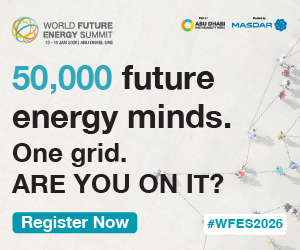Search - Search on Articles, Blogs & Tags
Total Results : 982
India adds 4 GW of new coal-fired power generation capacity in 2024
- 2024-12-31 05:12:11
- David Flin
India’s Central Electricity Authority has announced that the country’s coal-fired power generation capacity expanded by 4 GW in 2024, similar to the amount added in 2023.
GE Vernova to provide HVDC system for South Korea’s largest power grid infrastructure project
- 2024-12-27 05:30:03
- David Flin
GE Vernova has announced that it has been chosen through its joint venture, KAPES, by Korea Electric Power Corporation (KEPCO) to supply its HVDC system, based on Line Commutated Converter (LCC) technology for the 500 kV Donghaean #2 to Dong-Seoul HVDC converter station project EP2.
SK Gas launches world’s first 1.2 GW LNG-LPG combined cycle power plant in South Korea
- 2024-12-26 06:10:27
- David Flin
SK Gas has announced that its 1.2 GW LNG and LPG combined cycle power plant, Ulsan GPS, located in Ulsan, South Korea, has started commercial operation.
India reviews sulphur-reduction programme for coal-fired power plants
- 2024-12-25 05:17:54
- David Flin
India is reviewing a 10-year-old $30 billion programme that requires coal-fired power plants to install equipment to cut sulphur emissions.
China connects 1 GW integrated concentrated solar thermal and PV plant to grid
- 2024-12-23 05:26:21
- David Flin
A spokesperson from the Northwest Electric Power Design Institute of China Power Engineering Consulting Group has announced that a 1 GW integrated concentrated solar thermal power (CSP) and PV energy demonstration project in Hami, in Northwest China’s Xinjiang Uygur Autonomous Region, has commenced operation and has been connected to the grid.
Hyosung Heavy Industries and Korea Southern Power sign hydrogen energy project MOU
- 2024-12-20 05:32:31
- David Flin
Hyosung Heavy Industries and Korea Southern Power have signed an MOU to establish a strategic alliance to develop their position in the hydrogen power generation sector.
Japan plans for renewables to be largest power source by 2040
- 2024-12-17 05:51:55
- David Flin
The Japanese Government has announced that it is aiming for renewables to be its largest power source by 2040 in an attempt to reduce dependence on coal and gas and become carbon neutral by 2050.
India’s Gorakhpur nuclear power plant faces further delays
- 2024-12-13 05:18:28
- David Flin
The Gorakhpur nuclear power plant in Fatehabad, Haryana, India has encountered significant delays, with the completion of its first phase postponed to 2032.
Eskom and NTPC sign MOU
- 2024-11-29 06:07:16
- David Flin
NTPC of India and South Africa’s Eskom have signed an MOU to exchange knowledge and collaborate on R&D.
Meralco PowerGen plans $2 billion expansion for coal-fired plants
- 2024-11-28 06:00:52
- David Flin
Meralco PowerGen, the power generation arm of Manila Electric Co (Meralco), has outlined a $2 billion investment plan to develop two coal-fired power facilities in Cebu and Quezon.









